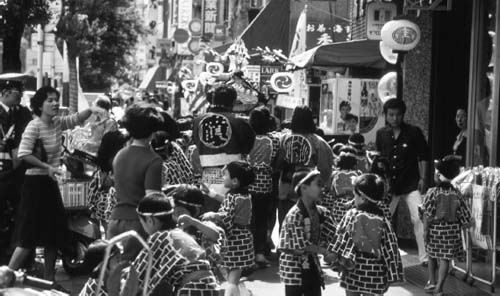ShintoLeadership, Authority, and Religious Roles |
How and where do members of local Shinto communities come together? |
Larger shrines provide the principal venue for Shinto community gatherings. The more elaborate shrines might have a dozen or more separate structures, each designed for a specific function. The ritual center includes facilities along the entry path for purification by water, as well as the various halls of worship and the sanctuary itself. There is often a separate facility in which the shrine ritual specialists purify themselves. Secondary shrine functions include a wide range of activities. Smaller buildings provide facilities for weddings (gishiki-den), sacred dance and performance of plays (kagura-den), and storage of the portable processional shrines called mikoshi. There is usually a sacred kitchen for preparing offerings and a small shop where worshippers can purchase mementos and items such as cards on which to write petitions to be hung on boards outside the main worship hall. Officials administer the whole operation from a shrine office, looking after all the more mundane concerns of any institution. That includes everything from scheduling of events and staff to arranging for supplies and paying bills. Smaller shrines naturally have fewer of these separate facilities, and the smallest often do not have resident priests.
Shrines are organized in a variety of ways. Some are directly managed by hereditary priestly families still connected with powerful clans of old. Committees of local elders oversee many village shrines that lack permanent priests. Trade guilds, called za, still worship together and manage their own shrines. Wealthy families sometimes even own and administer shrines just for their private use. Finally, some historic Buddhist temples have set up and maintained shrines in hopes of securing the protection of the kami for the temple. Some larger shrines attract worshippers from all over Japan, while most local shrines have relatively stable memberships of parishioners. But parishioners often have family or devotional ties to more than one local shrine.

Children dressed in happi coats play during neighborhood Shinto street procession in which the mikoshi, a portable miniature shrine, is paraded about on men’s shoulders (in background).
